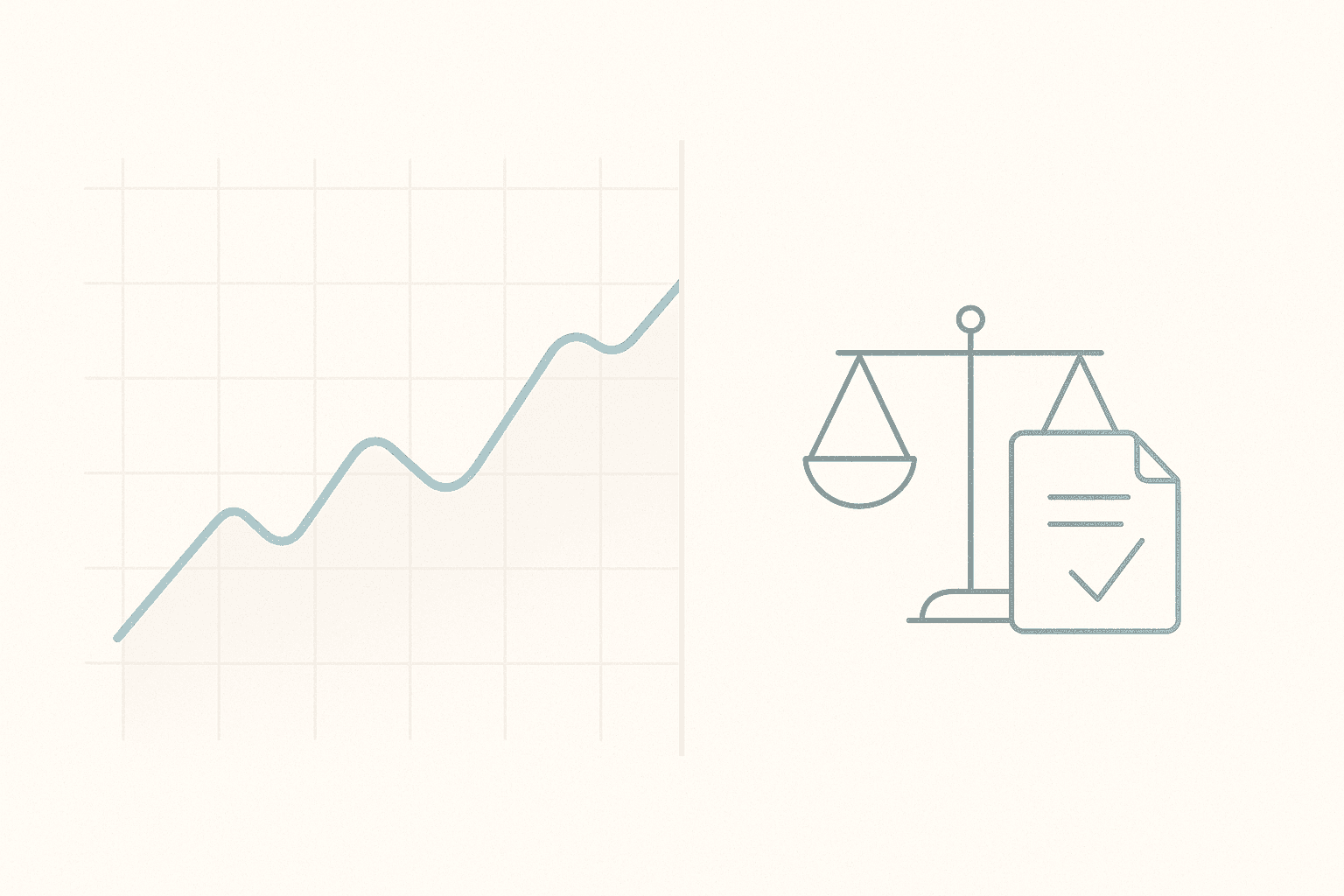AI Lawyer Blog
Scholarship Application Form Template: Free Download + AI Help

Greg Mitchell | Legal consultant at AI Lawyer
3
A Scholarship Application Form is a standardized document that students complete to apply for financial aid, grants, or merit-based awards. It typically collects personal details, academic history, financial background, and essay responses. For many students, this form is the gateway to making higher education affordable.
The U.S. Department of Education reports that in the 2022–23 academic year, over $112 billion in federal student aid was awarded to about 10.3 million students through grants, loans, and work-study. Private organizations, nonprofits, and universities add billions more in scholarships annually. With education costs climbing, completing scholarship applications thoroughly and accurately has never been more important.
Download the free Scholarship Application Form Template or customize one with our AI Generator — then have a local attorney review before you sign.
This guide is part of our Family Law series — designed to help families handle legal matters with clarity and compassion.
You Might Also Like:
API License Agreement Template (Free Download + AI Generator)
Property Settlement Agreement Template (Free Download + AI Generator)
1. What Is a Scholarship Application Form
A Scholarship Application Form is a document used by universities, nonprofit organizations, and governments to evaluate candidates for financial awards. It requests demographic details, transcripts, extracurricular records, references, and essays that highlight academic achievement, financial need, or leadership qualities.
Forms vary depending on whether the scholarship is need-based, merit-based, or focused on specific groups such as STEM majors, international students, or underrepresented communities. The goal is to provide a structured and fair process for evaluating thousands of applicants consistently.
2. Why It Matters in 2025?
Scholarship forms matter more than ever because:
Rising Costs: According to the College Board, the average published tuition and fees at U.S. four-year public colleges rose to $11,260 in 2023–24, while private nonprofit colleges charged an average of $41,540.
Global Demand: Students worldwide increasingly rely on scholarships to access higher education, especially in competitive fields like medicine and technology.
Equity and Inclusion: Scholarships reduce barriers for first-generation students and marginalized groups, making fair application processes critical.
Digital Applications: In 2025, most applications are electronic, requiring consistent documentation and cybersecurity protections.
3. Key Sections and Components
Most scholarship application forms include:
Personal Information: Full legal name, date of birth, nationality, and contact details.
Academic History: High school or university transcripts, GPA, and standardized test scores.
Financial Information: Household income, tax documents, and information on other aid.
Extracurricular Activities: Clubs, leadership roles, volunteer work, and employment.
Personal Statement/Essays: Essays on goals, achievements, or overcoming challenges.
Recommendation Letters: From teachers, professors, or mentors.
Signatures and Declarations: Applicant’s signature certifying truthfulness of information.
4. Legal and Institutional Requirements
Requirements differ by country and institution:
United States: Federal aid requires FAFSA completion; individual scholarships may require additional forms. Universities typically require GPA thresholds and verifiable transcripts.
European Union: Many EU scholarships require proof of residency, language test results, and compliance with GDPR for personal data handling.
Canada: Provincial and university-based scholarships require separate application forms, often tied to provincial aid programs.
Global Scholarships: Prestigious programs like Fulbright, Chevening, or Erasmus+ impose strict eligibility requirements, document verification, and in some cases, interviews.
Legal compliance ensures fairness, data protection, and eligibility confirmation.
5. How to Customize Your Form?
Customization allows institutions to assess specific applicant qualities:
Add special essay questions relevant to the scholarship’s mission (e.g., sustainability, leadership, or community impact).
Include financial-need supplements for need-based awards.
Request portfolios or creative submissions for arts-related scholarships.
Adapt forms for international applicants by including visa, passport, or residency details.
Use digital features like upload fields, e-signatures, and automated data checks.
6. Step-by-Step Guide to Completing the Form
Accuracy and detail are essential. Follow these steps:
Step 1 - Read eligibility rules: Confirm that you meet academic, financial, or demographic requirements.
Step 2 - Collect documents: Gather transcripts, recommendation letters, ID copies, and financial records.
Step 3 - Fill in personal details: Use consistent legal information that matches your official documents.
Step 4 - Complete academic history: Enter GPA, test scores, and attach transcripts.
Step 5 - Provide financial details: Disclose household income and submit supporting records truthfully.
Step 6 - Write essays carefully: Draft, proofread, and tailor essays to scholarship goals.
Step 7 - Add extracurriculars: Highlight leadership, service, and relevant experiences.
Step 8 - Review recommendations: Confirm references are submitted by deadlines.
Step 9 - Sign declarations: Certify accuracy and compliance with terms.
Step 10 - Submit before deadline: Upload online or send physical forms with all attachments.
7. Tips for Accuracy and Compliance
Start applications early to avoid last-minute errors.
Keep digital copies of all documents for backup.
Follow word limits and formatting instructions in essays.
Double-check GPA calculations and test scores.
Track deadlines using a planner or calendar.
Ask references at least a month in advance.
Review every page before final submission.
8. Checklist Before Submission
All personal information filled accurately.
Academic transcripts attached.
Financial records provided.
Essays proofread and uploaded.
Recommendation letters requested and submitted.
Declaration signed and dated.
Copies stored securely.
Download the Full Checklist Here
9. Common Mistakes to Avoid
Submitting incomplete forms without all required attachments.
Ignoring small eligibility details, like GPA minimums.
Missing deadlines because of late references.
Using generic essays instead of tailored responses.
Forgetting to sign declarations, invalidating the application.
Submitting scanned documents that are unclear or unreadable.
10. FAQs
Q: Is a Scholarship Application Form legally binding?
A: While not a contract in the same sense as a loan agreement, it is legally significant. Signing the form certifies that all information is true. Providing false details may lead to disqualification, repayment obligations, or legal action depending on the institution’s rules.
Q: How early should I start preparing my application?
A: Ideally, at least three months before the deadline. This allows time to gather transcripts, write and revise essays, and request recommendation letters. Starting early also helps manage overlapping deadlines for multiple scholarships without rushing.
Q: Do all scholarships require financial information?
A: No. Merit-based scholarships may only require academic and extracurricular records. However, need-based scholarships almost always require household income data, tax forms, and sometimes bank statements. Always review the instructions to know what applies.
Q: Can international students use the same form as domestic students?
A: Sometimes, but many programs have separate forms for international applicants. These may ask for visa or passport details, proof of English proficiency, and additional references. Always check the eligibility section before applying to avoid wasted effort.
Q: What happens if my form has errors after submission?
A: Some institutions allow corrections before the deadline, while others do not. Contact the scholarship office immediately if you realize there is a mistake. Minor errors may be overlooked, but significant ones could disqualify the application.
Sources and References
Financial aid statistics reference the U.S. Department of Education – Federal Student Aid Data Center, 2023 Report, which notes over $112 billion in aid distributed to approximately 10.3 million students during the 2022–23 academic year.
Tuition cost data are drawn from the National Center for Education Statistics (NCES, U.S. Department of Education), showing average annual tuition of $11,260 at public four-year institutions and $41,540 at private nonprofit colleges.
Global scholarship frameworks reference the European Commission – Erasmus+ Programme Guide, the Chevening Scholarships Official Site (UK FCDO), and the Foreign, Commonwealth & Development Office (FCDO).
Together, these data sources provide the educational, financial, and regulatory context underlying Scholarship Application Forms and related student funding programs in 2025.
Disclaimer
This article is for general informational purposes only and does not constitute legal or financial advice. Rules differ between institutions and jurisdictions. Always consult the scholarship provider’s official guidelines before preparing or relying on a Scholarship Application Form.
Get Started Today!
A Scholarship Application Form can open doors to life-changing opportunities. Filling it carefully ensures your achievements and needs are presented clearly to selection committees.
Download the free Scholarship Application Form Template or customize one with our AI Generator — then have a local attorney review before you sign.
Explore more resources in our Family Law series to handle sensitive matters with clarity and care.
You Might Also Like:



